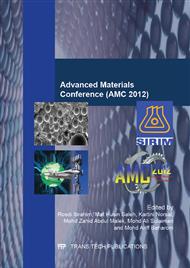p.90
p.96
p.102
p.107
p.112
p.119
p.128
p.134
p.139
Rapid Debinding of Injection Moulded M2 High Speed Steel Using Palm Stearin/Waste Rubber Binder
Abstract:
Tendency of injection moulded parts to necessitate a long debinding time which consequently leads to an increase of defects formation has been a major obstacle for the economic process of Metal Injection Moulding (MIM). In the present study, a novel binder system based on waste rubber has been formulated in injection moulding of Molybdenum High Speed Steel (M2 HSS). The feedstock consisted of M2 HSS powder with mean diameter particle size of 16μm and binder which comprised of palm stearin, polyethylene, waste rubber and stearic acid. The moulded part was immersed into n-heptane at 60°C in order to remove the palm stearin and stearic acid, followed by sintering in a controlled vacuum atmosphere. Results showed that solvent extraction debinding technique allowed complete removal of palm stearin and stearic acid from the injection moulded part within 3 hours without swelling or distortion of the debound part. In addition, this study has demonstrated that, the novel binder system has successfully shorten the debinding time through a single stage debinding process whilst the sintered part possessed approximate density of 8.1 g/cm3 and hardness of 76.9 HRC.
Info:
Periodical:
Pages:
112-118
Citation:
Online since:
January 2014
Price:
Сopyright:
© 2014 Trans Tech Publications Ltd. All Rights Reserved
Share:
Citation:


